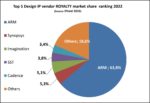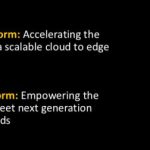In an era where artificial intelligence workloads are growing in scale, complexity, and diversity, chipmakers are facing increasing pressure to deliver solutions that are not only fast, but also flexible and programmable. Semidynamics recently announced Cervell™, a fully programmable Neural Processing Unit (NPU) designed… Read More
Tag: datacenter
Perspectives from Cadence on Data Center Challenges and Trends
From my vantage point in the EDA foxhole it can be easy to forget that Cadence also has interests in much broader technology domains. One of these is in data center modeling and optimization, through their Cadence Reality Digital Twin Platform. This is an area in which they already have significant track record collaborating with… Read More
Datacenter Chipmaker Achieves Power Reduction With proteanTecs AVS Pro
As semiconductor technology advances and nodes continue to shrink, designers are faced with increasing challenges related to device complexity, power consumption, and reliability. The delicate balance between high performance, low power usage, and long-term reliability is more critical than ever. This growing demand … Read More
A Post-AI-ROI-Panic Overview of the Data Center Processing Market
With all the Q2-24 results delivered, it is time to remove the clouds of euphoria and panic, ignore the performance claims and the bugs, and analyse the Data Center business, including examining the supply chain up and downstream. It is time to find out if the AI boom in semiconductors is still alive.
We begin the analysis with the … Read More
Managing Power at Datacenter Scale
That datacenters are power hogs is not news, especially now AI is further aggravating this challenge. I found a recent proteanTecs-hosted panel on power challenges in datacenter infrastructure quite educational both in quantifying the scale of the problem and in understanding what steps are being taken to slow growth in power… Read More
proteanTecs Addresses Growing Power Consumption Challenge with New Power Reduction Solution
proteanTecs is a unique company, delivering electronics visibility from within. Its core mission is to enable the electronics industry to continue to scale. The company achieves this goal by first embedding on-chip monitors, called Agents, during the design process to generate deep data on the chip’s profiling, health, and… Read More
Design IP Sales Grew 20.2% in 2022 after 19.4% in 2021 and 16.7% in 2020!
Design IP revenues had achieved $6.67B in 2022, after $5.56B in 2021, or 20.2% growth after 19.4% in 2021 and 16.7% in 2020. IPnest has released the “Design IP Report” in April 2023, ranking IP vendors by category (CPU, DSP, GPU & ISP, Wired Interface, SRAM Memory Compiler, Flash Memory Compiler, Library and I/O, AMS, Wireless… Read More
Webinar: Addressing the Challenges of Hyper-scaling within Data Centers with Advanced Node Embedded Sensing Fabrics
I had a chance to preview the subject webinar recently. Yes, it’s a long title, but a very important topic. When it comes to hyper-scale data centers, there are substantial challenges associate with thermal management, power distribution and processing performance. Moortec explores approaches to these issues using their … Read More
Segmenting the Machine-Learning Hardware Market
One of the great pleasures in what I do is to work with people who are working with people in some of the hottest design areas today. A second-level indirect to be sure but that gives me the luxury of taking a broad view. A recent discussion I had with Kurt Shuler (VP Marketing at Arteris IP) is in this class. As a conscientious marketing… Read More
Arm Deliver Their Next Step in Infrastructure
Arm announced their Neoverse plans not long ago at TechCon 2018. Neoverse is a brand, launched by Arm, to provide the foundations for cloud to edge infrastructure in support of their vision of a trillion edge devices. To a cynic this might sound like marketing hype. Sure, they’re widely used in communications infrastructure and… Read More










